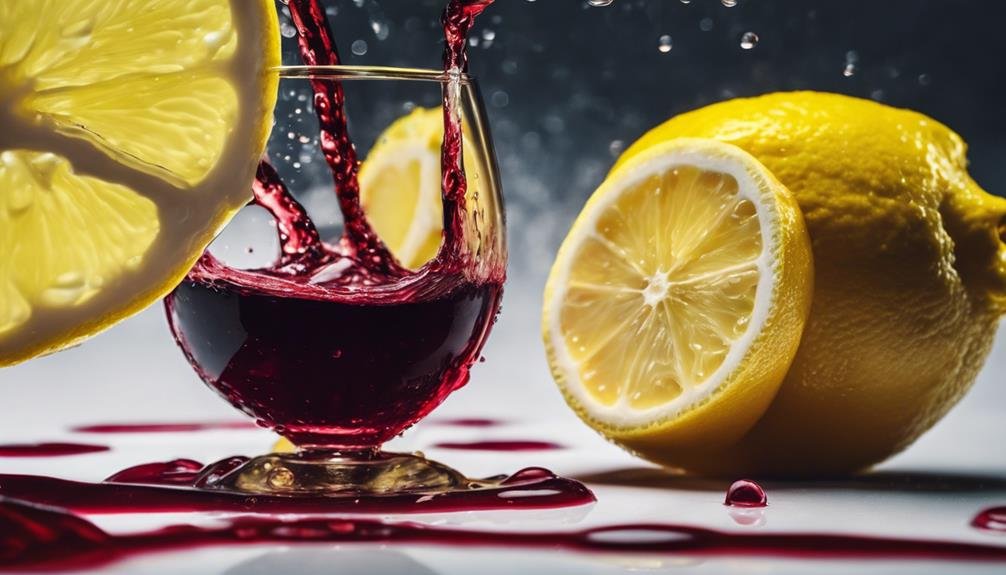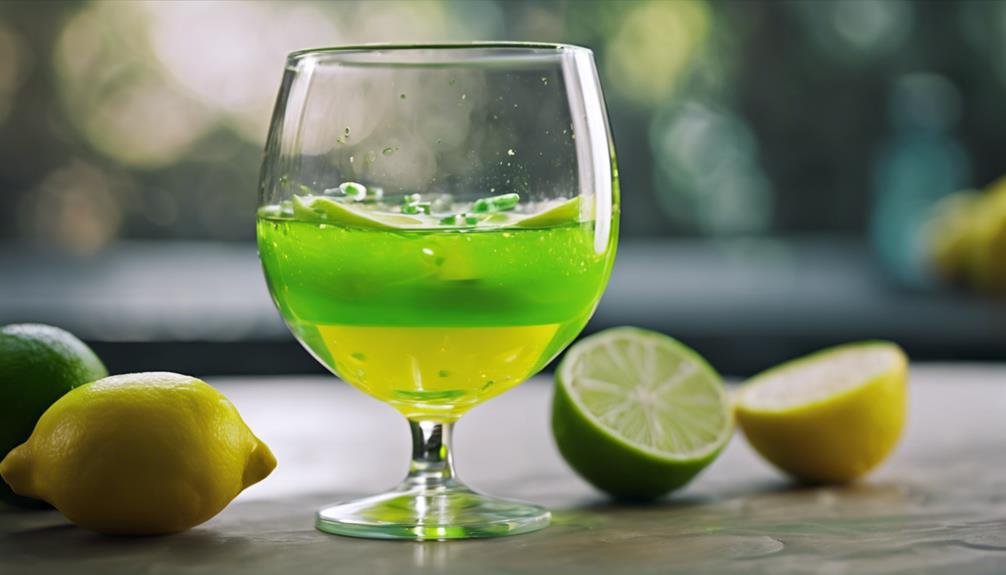Explore the enigmatic world of wine's tangy allure through its acidity dynamics. Acidity is fundamental, shaping wine's tartness and aging potential. The interplay of acidity and flavors influences tasting experiences, with varying levels in different wines. Understanding acidity's sensory impact, from a puckering sensation to pH differences, enhances appreciation. In gastronomy, acid-base pairing enriches dining pleasures by highlighting contrasts or creating harmonious blends. Environmental factors like climate and soil also influence acidity in grapes. Winemakers skillfully adjust acidity levels during production, shaping wine quality. Discover the tangy secrets within each pour, revealing a journey through wine's intricate acidity nuances.
Acidity Fundamentals in Wine
Acidity is a foundational element in wine, essential for imparting the tart and sour characteristics that contribute to the overall flavor profile of the beverage. Achieving the right acidity balance is vital in winemaking, as it influences the taste and aging potential of the wine.
Understanding acidity tasting techniques is key to appreciating wine fully. The sensation of acidity in wine is often described as a puckering feeling in the mouth, similar to the tartness of lemonade. Different wines exhibit varying levels of acidity, with some varieties like Riesling being particularly high.
Sweetness can mask perceived acidity in wine, affecting the overall taste. By mastering acidity tasting techniques, wine enthusiasts can deepen their wine appreciation and tasting experiences.
Sensory Perception of Acidity
The perception of acidity in wine is a pivotal aspect of sensory evaluation, influencing the overall tasting experience. Taste perception plays an important role in detecting the tart and sour characteristics that acidity imparts to wine.
The acidic balance in wine, determined by acids like tartaric, malic, and citric acids, can create a puckering sensation similar to lemonade, indicating the level of acidity present. Different wines exhibit varying acidity levels, with some varieties like Riesling showcasing higher acidity profiles. The logarithmic nature of the pH scale magnifies the difference in acidity between wines of different pH levels.
Understanding how sweetness interacts with acidity is significant, as it can influence the perceived acidity in wine, ultimately impacting the balance and complexity of the tasting experience.
Acid-Base Pairing in Gastronomy

In the world of gastronomy, the interplay between acidic and basic elements in food and wine pairing is a nuanced art that elevates the dining experience. When considering acid-base pairing, achieving flavor balancing and taste harmony is crucial. Here's how it works:
- Contrast: Pairing acidic dishes with a basic wine can create a contrast that highlights the flavors in both the food and the wine.
- Complement: Matching acidic foods with acidic wines can create a harmonious blend where the flavors complement each other.
- Enhancement: Balancing the sourness of acidity in food with sweetness, saltiness, or fat can enhance the overall taste experience.
- Versatility: Acidic wines like Champagne offer versatility in pairing with a range of dishes, from savory to sweet, enhancing the dining experience.
Environmental Impact on Acidity
Climate conditions directly influence the acidity levels found in wines, shaping their flavor profiles and overall quality. Climate variations, such as temperature and sunlight exposure, impact grape development and acidity. Cooler climates tend to preserve higher acidity levels in grapes, while warmer regions can lead to grapes with lower acidity.
Soil composition also plays a significant role, as it affects the nutrients available to the vines, influencing the grapes' acid content. Grapes grown in regions with cooler nights or shorter growing seasons often exhibit higher acidity due to slower ripening processes.
Understanding how environmental factors like climate and soil composition affect acidity is essential for winemakers to produce wines with balanced sweetness and acidity, ultimately contributing to the complexity and quality of the final product.
Acidic Dynamics in Winemaking

Acidity manipulation during winemaking processes is a pivotal factor in shaping the flavor profile and overall quality of the final product. Understanding the acidic dynamics in winemaking involves several key elements:
- Fermentation Processes: Various fermentation techniques impact acidity levels, with malolactic fermentation converting malic acid to lactic acid, altering the taste.
- Flavor Development: Acidity plays an essential role in flavor development, enhancing the wine's brightness and balance.
- Acid Adjustment: Winemakers may adjust acidity levels to achieve desired taste profiles, ensuring harmony in the wine.
- pH Regulation: Monitoring pH levels is essential as it influences the perceived acidity and overall quality of the wine.
Frequently Asked Questions
How Does Aging Affect the Acidity Levels in Wine?
Aging impacts wine acidity through enzymatic reactions like malolactic fermentation, which reduces harsh acids. As wine ages, pH levels may rise due to chemical reactions. Acidity preservation during aging is essential for maintaining balance and complexity in wines.
Can Acidity in Wine Vary Based on Grape Varietals?
Acidity levels in wine can notably vary based on grape varietals. Climate influence, particularly cooler climates, can preserve higher acidity levels in grapes. Soil types also play a role in grape acidity, affecting the overall taste profile of wines.
Does Oak Aging Influence the Perception of Acidity in Wine?
Oak influence on wine acidity perception is significant. Aging in oak barrels can soften perceived acidity by integrating flavors, tannins, and mouthfeel, balancing the wine. This process can enhance complexity and texture, offering a nuanced drinking experience.
Are There Natural Ways to Adjust Acidity in Winemaking?
In winemaking, adjusting acidity naturally involves managing pH levels through malolactic fermentation. This process converts harsher malic acid into milder lactic acid, softening the wine's tartness. Additionally, winemakers can manipulate acidity by blending in tartaric acid-rich components.
How Does Carbonic Maceration Impact the Acidity of Wine?
Carbonic maceration, a fermentation process, can impact wine acidity by promoting the extraction of softer, less astringent acids, leading to a smoother flavor profile. This technique is known to enhance fruity characteristics in wines, contributing to overall complexity.
Conclusion
In the intricate world of wine, acidity stands as a cornerstone, shaping the sensory experience and aging potential of each bottle. Like a fine-tuned orchestra, acidity harmonizes with other elements to create a symphony of flavors that dance on the palate.
Understanding the tangy secrets of wine reveals a deeper appreciation for the artistry of winemaking and the complexities of viticulture. Immerse yourself in the world of acidity, where every sip tells a story of balance and nuance.